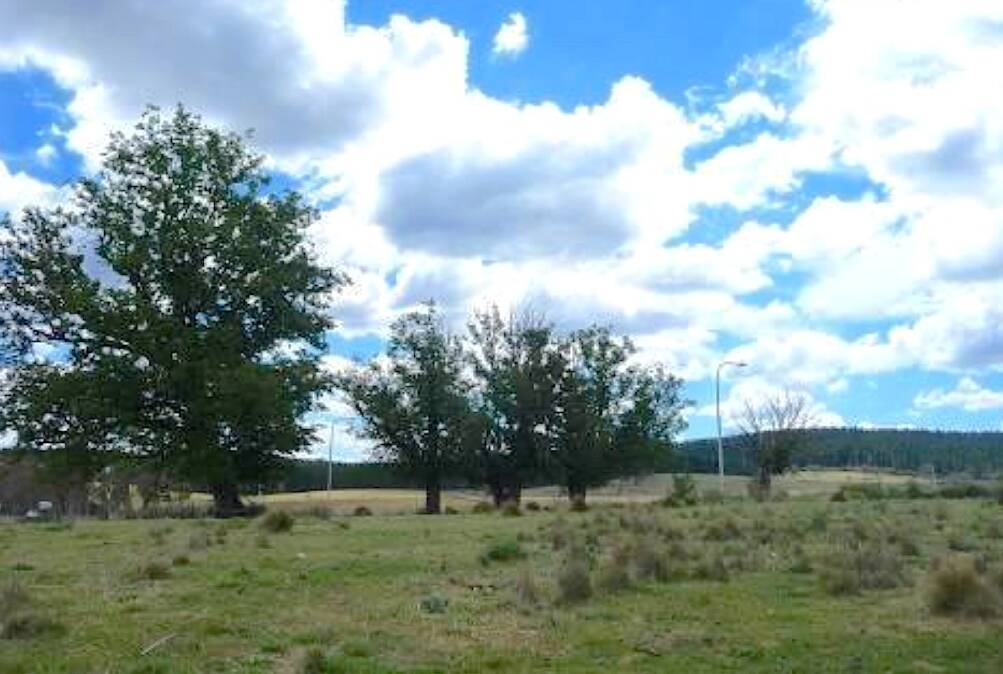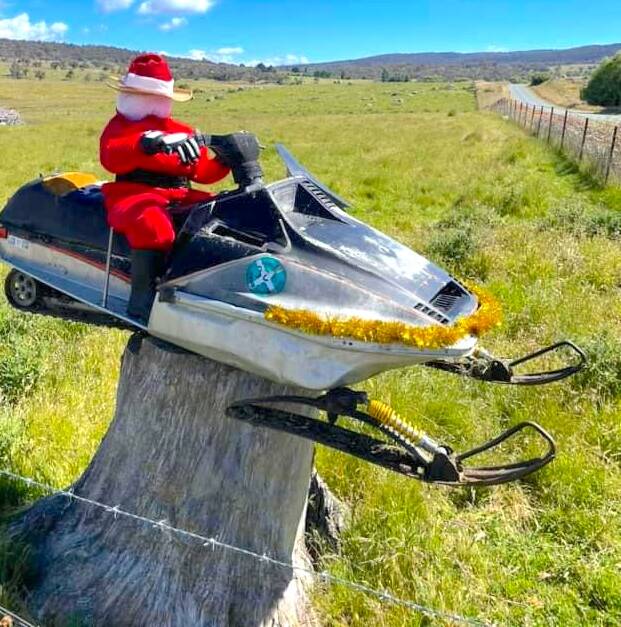It's the first weekend of summer. A time when the minds of many Y-platers turn to that much anticipated end-of-year dose of saltwater therapy.
For many, the annual pilgrimage to the coast is as much about the journey as it is about their favourite patch of sand. Who catches the first glimpse of the white caps, or the first whiff of the Tasman Sea is always a hotly contested competition in the yowie-mobile.
Not to mention trying to stump each other with a clever "I Spy" clue. I outwitted everyone with "K" for the giant kewpie doll that stood for many years at the back of a Bungendore antique shop and was visible to passing motorists. You'd think my backseat brigade would have nailed it after the third consecutive year I rolled it out. The giant doll is on holiday in Gundagai, so I need to come up with a new riddle this year.
Regardless of how many rounds of I Spy you play, even with traffic snarls and the compulsory stop at Pooh's Corner, a trip to Batemans Bay and beyond is only a few hours. But it wasn't always that way.

In the 1800s it took several days to reach the coast by horse and cart and the road was lined with regular stops. Not so much the milkshakes, lattes, and Dojo Bread you'll find today, but more beer and blacksmiths.
One such watering hole was the Hibernian Inn. If your regular route to the coast is via Queanbeyan and Bungendore, then you'll have passed it on many occasions, It's right next to the turn-off to The Australian Headquarters Joint Operations Command (HQ JOC).
Never seen it? Well, that's because time has not been kind to the former inn after it was abandoned in the late 1800s.

David Hanzl of Carwoola recently took a deep dive into the colourful past of the long-forgotten roadside stop for an historical exposé he penned for the Carwoola Gazette, his local community newsletter.
"I first heard about the site when I was working at HQ JOC a few years after they'd done an archaeological dig to ensure the site wasn't disturbed when the access road was built," reveals David.
Despite its location on what many of us now refer to as "the coast road", the main purpose of the Hibernian Inn, run by the Sparrow family from 1859 to 1887, was to service weary travellers between Goulburn and Queanbeyan, linking routes to Braidwood and south to the Monaro and the goldfields of Kiandra.

Of course, travel in the mid-1800s was a far cry from the air-conditioned comfort enjoyed by today's motorists.
"Horse-drawn stagecoaches would take many tedious hours to grind their way through the hills, rattling across deeply rutted tracks," explains David.
"The coachman carried an axe to clear trees from the road and if the hill was too steep, all the passengers had to get out and walk to ease the load for the horses.

"At the time there was no bridge over the Molonglo River, just five kilometres or so away at Burbong, so the Hibernian would have been an important refuge if the river was flooded ... people could be stranded on one side with no other shelter for many miles."
Boomtime at the roadside inn was during the Kiandra goldrush in the 1860s, with many people passing the Hibernian from Sydney, enroute to trying their luck in the goldfields of the high country.
According to David, it would also have been prosperous during the early to mid-1880s as the Goulburn-Queanbeyan (and beyond to Cooma) railway was being constructed.
However, the emergence of an alternative form of transport ultimately led to the demise of the Hibernian.
"Wherever the railway spread, it steadily brought to an end the role of the stagecoach network in providing transport for passengers, mail and goods," says David. "The hotel closed shortly after the railway finally reached Queanbeyan in 1886 and by the late 1890s most of the Sparrow land was handed over to the Commercial Banking Company of Sydney."
Unfortunately, David hasn't been able to uncover any photographs or sketches of the inn from its heyday. However, there is an image of it in ruin taken by Frank Walker, a passionate supporter of local history who between 1895 and 1906 cycled about 40,000 kilometres across the country taking glass plate negatives, sometimes providing the only known photo of some sites.

"Today, little is left of the Hibernian above the ground as the main building was originally constructed of pisé (rammed earth) which rapidly erodes once the roof is gone and the walls are exposed to the elements," explains David. Only the stone foundations now remain, barely peeking through the grass and all but invisible to drivers passing on the highway just a few metres away.
The best way to identify the site are five Dutch elm trees that mark the western side of the site. Enough fodder, I declare, for my new I Spy clue. Should I try "something beginning with D" for Dutch elms or "P" for phantom pub? Given the yowie clan failed repeatedly with the "K" for kewpie doll, I think I'm safe either way. Which is a good thing, for the winner doesn't only get bragging rights, but also the first pie in Braidwood. Happy holidays!
Last drinks at the Hibernian!

Phantom pub: The site of the former Hibernian Inn is located adjacent to the Kings Highway between Queanbeyan and Bungendore, directly opposite the southern end of Mill Post Lane, near the Headquarters Joint Operations Command (HQ JOC) roundabout and the Felled Timber property.
It's all in a name: The name Hibernian was popular among Irish innkeepers throughout New South Wales in the 1800s. Hibernia is an old Roman name for Ireland.
Digging up the past: An archaeological dig in 2008 that coincided with the widening of the Kings Highway for HQ JOC provided "a glimpse into the life and function of a mid-19th century roadside inn". Hundreds of items were unearthed from the site, including ceramic tableware, horseshoes, nails, clay smoking pipes and even mutton chop bones.

Archaeology 'n art: During 2016, several eye-catching artworks - including Last Drinks at the Hibernian - which featured some of the items uncovered in the 2008 dig, were installed at the Belconnen Arts Centre as part of the University of Canberra Faculty of Arts and Design staff exhibition, Encyclopaedia of Forgotten Things. The artworks were the creation of Tracy Ireland, a professor of cultural heritage, and Dr Ursula Frederick, a fellow archaeological and heritage practitioner from the Department of Heritage and Conservation Studies. "Our research centre specialises in bringing creative practice to a range of other disciplines, including science," explains Tracy. "Combining artistic or creative practice with archaeology is an emerging area."
Lasting legacy: Near the site of the former inn are Hibernian Road and Sparrow Hill Road. Sparrow Hill, well known to the mountain bike fraternity, is also named after the Sparrow family, as is the trig station atop its peak.
WHERE IN CANBERRA?

Rating: Medium - Hard
Clue: Maybe they should teach "street furniture maintenance" here.
How to enter: Email your guess along with your name and address to tym@iinet.net.au. The first correct email sent after 10am, Saturday December 2 wins a double pass to Dendy, the Home of Quality Cinema.

Last week: Last week's photo of a clapped-out snowmobile perched high and dry atop a tree stump proved too big a challenge for most readers. In fact, I received more missives from correspondents - including Alan Hume, Jim Hudson and Juha Turunen - miffed I had incorrectly labelled the rusting relic as a jet ski, than correct answers. Hearty congratulations to Dominic Wade of Amaroo, formerly of Cooma, who was first to recognise the location marking the entrance of a property on the Rocky Plains Road near Lake Eucumbene.

Last December, Santa was spotted sitting at the handlebars of the out-of-place skidoo but there's no chance of a repeat this year as I'm reliably informed that earlier this week the owners of the property replaced the skidoo with a tinsel-covered Ford International truck (presumably next to, and not atop, the stump).
If you spot any quirky Christmas-inspired driveway displays around our region, please send them in. I'll publish a selection of the best.
OUR QUINTET OF ROADSIDE INNS
According to a 2014 report by the ACT Heritage Council, the former Hibernian Inn site is one of only five known 19th-century roadside inns in the ACT. There is physical evidence remaining for only three of these, with the Hibernian being the only one that has not since been overtaken by suburbia and that was only ever an inn. The other two, Lyneham's Old Canberra Inn and Elmsall in Oaks Estate (now a private residence known as The Oaks) were, for most of their lives, adapted into residences and hence both have been reworked many times which "means that the Hibernian Hotel site is the only substantial physical evidence in the ACT of a 19th-century roadside inn; an important period in the settlement of the area".
CONTACT TIM: Email: tym@iinet.net.au or Twitter: @TimYowie or write c/- The Canberra Times, GPO Box 606, Civic, ACT, 2601







